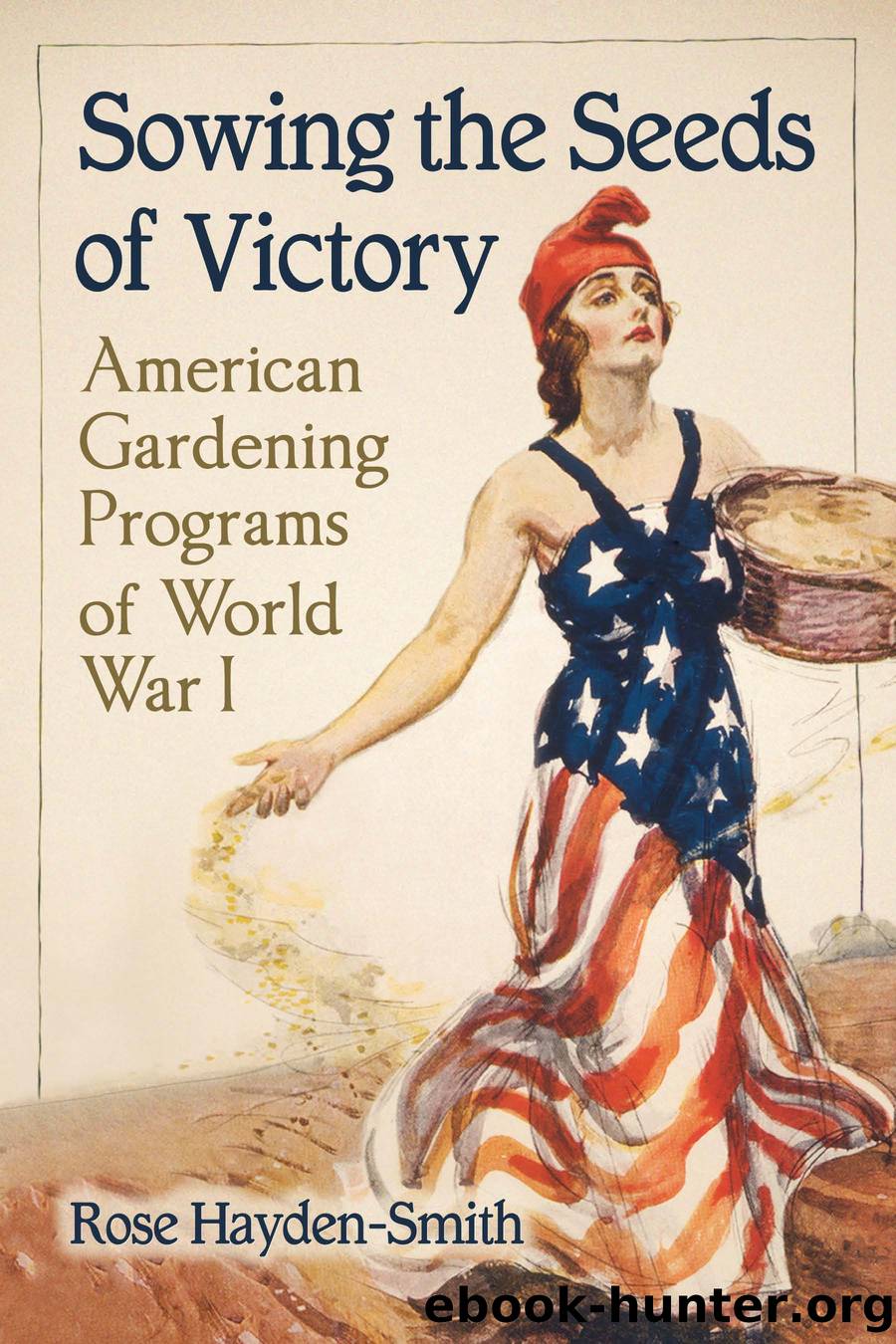Sowing the Seeds of Victory by Rose Hayden-Smith

Author:Rose Hayden-Smith
Language: eng
Format: epub
Publisher: McFarland & Company, Inc., Publishers
Published: 2014-04-18T00:00:00+00:00
Endings
Like the school garden, city garden and garden city movements, Ambler was a product of its historical environment. It was strongly influenced by a number of impulses, including varying reform agendas, European models, womanâs rights, and avid interest in educational opportunities for women and trends of professionalization and agricultural specialization. Federal legislation also influenced the development of Ambler, as did Progressive Era philosophies. The various gardening movements feeding into national gardening programs during World War I were shaped by these impulses, and in turn, added something to each of them.
The imprint of the Progressive Era is easily seen in Ambler, with its emphasis on scientific management, technical training, and highly ordered existence. For example, Amblerâs literature is replete with schedules, and highly specific detail about coursework, the arrangement of living quarters, conduct, etc. While Ambler represented a typical prescriptive Progressive Era program in many ways, it was a bit different. Unlike the other movements of school gardens and community gardens found more than a century ago, which have persisted and are even experiencing a major resurgence today, the experiment of womanâs horticultural schools such as Ambler has not survived. But by its very existence, Ambler provided a new and different meaning for womanâs work in agriculture and horticulture.
As the WLAA did during World War I, Ambler strongly challenged stereotypes about the proper role of women in the labor force and their role in the agricultural sector in particular. The success of the Ambler âfarmerettesâ (as the WLAA participants came to be called in World War I) defied deeply held beliefs about the potential of middle and upper-class urban women to be successful at hard physical labor and the appropriateness of a certain class of urban females working outside of the domestic sphere. A further challenge was the residential nature of Amblerâs degree program; women lived and worked with other women, freed from the authority of men.
All of these elements were replicated in the WLAA program during World War I; in fact, the WLAA was born of Ambler, a school that took for its formative mission âagriculture as a means of livelihood for women.â The theme of womanâs rights is threaded through the Ambler experience. It is not the primary theme perhaps, but it resonates and echoes in many ways. As women sought increased political, educational, social, and economic opportunities, schools such as Ambler provided places of accommodation and advancement. Ambler enabled women to live together in community, and to direct their own affairs. It provided opportunities for women to study science and for other women to serve as faculty and in leadership roles. It enabled women to challenge widely held stereotypes about their physical limitations and to work with their hands. It prepared several generations of women for new occupations, for self-employment, and for more lucrative work.
By nearly every measure, Ambler was an extraordinary success. But as women gained greater equality and more opportunities, they simply outgrew the need for such institutions. The presence of these institutions at a critical
Download
This site does not store any files on its server. We only index and link to content provided by other sites. Please contact the content providers to delete copyright contents if any and email us, we'll remove relevant links or contents immediately.
Craft Beer for the Homebrewer by Michael Agnew(18194)
Marijuana Grower's Handbook by Ed Rosenthal(3640)
Barkskins by Annie Proulx(3334)
Project Animal Farm: An Accidental Journey into the Secret World of Farming and the Truth About Our Food by Sonia Faruqi(3189)
The Plant Messiah by Carlos Magdalena(2900)
Red Famine: Stalin's War on Ukraine by Anne Applebaum(2890)
0041152001443424520 .pdf by Unknown(2812)
Organic Mushroom Farming and Mycoremediation by Tradd Cotter(2660)
In the Woods by Tana French(2560)
Beer is proof God loves us by Charles W. Bamforth(2414)
7-14 Days by Noah Waters(2385)
Borders by unknow(2280)
Reservoir 13 by Jon McGregor(2264)
Meathooked by Marta Zaraska(2237)
The Art of Making Gelato by Morgan Morano(2233)
Between Two Fires by Christopher Buehlman(2216)
Birds, Beasts and Relatives by Gerald Durrell(2196)
The 7 Habits of Highly Effective People: Powerful Lessons in Personal Change (25th Anniversary Edition) by Covey Stephen R(2169)
The Lean Farm Guide to Growing Vegetables: More In-Depth Lean Techniques for Efficient Organic Production by Ben Hartman(2106)
